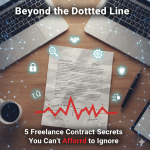Introduction: Beyond the Hype
It’s nearly impossible to avoid the headlines about artificial intelligence—a narrative often split between utopian promises and dystopian fears. But when we move from broad speculation into the high-stakes world of law, where justice, fairness, and human lives hang in the balance, the story of AI becomes one of profound professional realignment. The reality of AI in the legal profession is not about replacing judges with algorithms. Instead, it’s a nuanced story of efficiency, access, and deep ethical questions that challenge the very core of our justice system. Here are four truths that reveal AI’s real impact on the law.
AI Isn’t Replacing Lawyers—It’s Rescuing Them from Drudgery
Contrary to the common narrative, AI’s primary role in the legal field isn’t to replace human professionals but to automate the tedious, repetitive, and often non-billable administrative work that consumes their day. The most recent Legal Trends Report reveals a startling statistic: the average lawyer performs only 2.9 hours of billable work in a standard 8-hour day, resulting in a utilization rate of just 33%. The rest of their time is spent on essential but monotonous tasks that AI is perfectly suited to handle.
A powerful real-world example comes from the Legal Aid Society (LAS) of Middle Tennessee and the Cumberlands. The team was manually—sometimes even handwriting—expungement petitions, an extremely time-consuming process. In response, a team led by paralegal Mustafa Enver built an AI solution using ChatGPT. They trained the model to read criminal records, identify charges eligible for expungement, and push that information to a document automation tool. The result was staggering: at a single-day clinic, the LAS team successfully expunged 384 charges for 98 people.
This automation is critical because it reallocates legal professionals to high-value, uniquely human tasks: client counsel, strategic negotiation, and ethical deliberation.
Criminal charges, even those that are eligible for simple, free expungement, can prevent someone from obtaining housing or employment. This is a simple barrier to overcome if only help is available. — Zachary Oswald, Senior Deputy Director of Client Services at LAS
While this newfound efficiency is transforming the day-to-day work of lawyers, its most profound impact may be on those who couldn’t afford their time in the first place.
The Goal Isn’t Cheaper Lawyers, It’s More Access to Justice
A common assumption is that AI-driven efficiency should lead to a sharp drop in legal fees. However, this paradox overlooks several key business realities. The promised cost reductions haven’t always materialized due to: 1) the substantial initial investment required for AI technology, 2) the continued necessity of skilled (and expensive) human lawyers for complex analysis, and 3) the potential for AI to actually increase the overall demand for legal services, counterbalancing fee reductions.
The true promise of AI in law is not making a top-tier lawyer cheaper, but bridging the “justice gap.” This gap disproportionately affects the “missing middle”—defined as “individuals (as well as small and medium-sized enterprises) who cannot afford legal representation, but also do not qualify for legal aid assistance.” AI-powered tools are proving crucial in serving this demographic.
For example, Legal Aid of North Carolina and Legal Aid of West Virginia created AI-powered virtual legal assistants to provide accessible information in plain language. These tools are invaluable for people in rural “legal deserts” who face geographic barriers to help, saving time for both users and legal aid staff, who can then focus their limited resources on more complex cases.
AI offers the capacity to provide quick, accurate information to a vast audience, particularly to those in urgent need. AI can also help reduce the burden on our legal staff, allowing them to focus on more complex or nuanced cases that require human intervention while simple, routine questions and information can efficiently be handled by the AI. — Scheree Gilchrist, Chief Innovation Officer, Legal Aid of North Carolina
But as these tools expand their reach to serve the vulnerable, the ethical stakes become exponentially higher, shifting our focus from logistical challenges to a far more insidious threat.
The Biggest Risk Isn’t a Rogue AI, It’s Human Bias
Fears of a sentient, malicious AI belong in science fiction. The most immediate and subtle ethical danger of AI in law is far more grounded: algorithmic bias. AI systems learn by analyzing vast amounts of data, and if that data reflects historical, systemic biases present in our society, the AI will learn, replicate, and perpetuate them.
A clear example can be found in AI models used to guide decision-making on recidivism. A judge might use an algorithmically generated risk score to predict how likely an individual is to reoffend. However, if that algorithm is trained on data from a district with a history of racial discrimination, its risk scores could reinforce those very biases. This algorithmic calcification of historical prejudice poses a far greater threat than any sentient AI, as it cloaks injustice in a veneer of objective, data-driven neutrality.
This quiet threat is a pressing concern for a profession built on fairness. Recognizing this, international bodies like the Australian Human Rights Commission (AHRC) have launched projects focused on eliminating bias by design, ensuring human rights principles are embedded in the architecture of these systems.
AI Makes Mistakes, and Lawyers Are Still on the Hook
While AI is a powerful tool, it is not infallible. Ultimately, legal professionals remain responsible and accountable for their work product. This principle was highlighted in a notable cautionary tale from June 2023, when two Manhattan lawyers filed court submissions containing non-existent judicial opinions with fake quotes and citations entirely fabricated by ChatGPT.
The judge in the case, U.S. District Judge P. Kevin Castel, clarified that while using AI is not “inherently improper,” lawyers have a non-delegable duty to “ensure that their filings were accurate.” This incident serves as a critical reminder that AI lacks essential human traits like discretion, nuanced judgment, and ethical accountability. While AI can streamline routine tasks, it cannot take over responsibilities like “strategic decision-making, complex legal analysis, and legal counsel.” The “human in the loop” is not merely a feature; it is a fundamental ethical and professional requirement.
Conclusion: A Tool, Not a Verdict
AI is not delivering a final verdict on the legal profession but is instead providing a transformative set of tools. It is reshaping the industry by augmenting human expertise, not replacing it. Freeing lawyers from administrative drudgery (Takeaway 1) allows them to focus their skills on expanding access to justice (Takeaway 2). However, this very act of scaling legal services introduces critical new risks, demanding that the profession vigilantly guard against algorithmic bias (Takeaway 3) and uphold unwavering human accountability (Takeaway 4).
As AI becomes more woven into the fabric of our legal system, the critical question is not what the technology can do, but what we, as a society, decide it should do.












